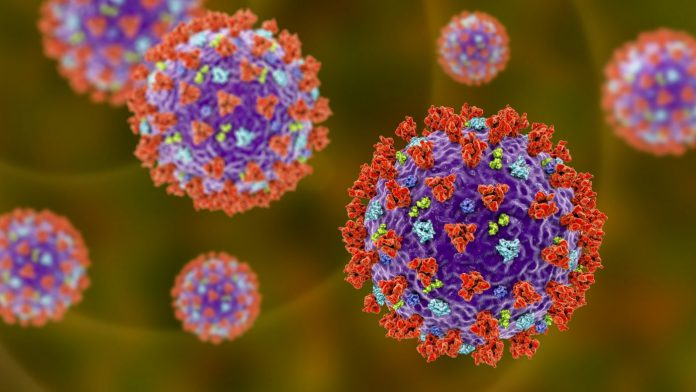
A big challenge with the SARS-CoV-2 virus, which causes COVID, is that it regularly generates variants. Now, a new targeted RNA consensus sequencing method (tARC-seq) can accurately determine SARS-CoV-2 mutation frequency and types, both in cell culture and clinical samples, according to researchers at Baylor College of Medicine and collaborating institutions.
The study was published April 22. 2024 in Nature Microbiology. The lead author is Catherine Bradley of Baylor.
According to their work, tARC-seq has already revealed a genetic mechanism affecting SARS-CoV-2 divergence and enabled the team to calculate SARS-CoV-2’s mutation rate. The researchers also used tARC-seq to find new mutations that recapitulated observations revealed by worldwide pandemic viral sequencing data.
“The SARS-CoV-2 virus uses RNA, instead of DNA, to store its genetic information… We decided to investigate its process of RNA replication, which is typically error prone in RNA viruses,” said corresponding author Christophe Herman, professor of molecular and human genetics and of molecular virology and microbiology at Baylor.
The researchers wanted to follow RNA replication errors because they are crucial for understanding how the virus evolves.
“Because samples from patients have very few SARS-CoV-2 RNA copies, it is difficult to distinguish between the errors made by SARS-CoV-2 RNA-dependent RNA polymerase (RdRp), the enzyme that makes copies this virus’ RNA, and the errors from the other enzymes used in the sequence analysis,” said Herman. He added that tARC-seq allows the measure of true errors when copying specific RNA present in very low amounts.
Originally, it was thought that because SARS-CoV-2 has an internal mechanism to repair the mistakes RdRp makes, then the virus should not evolve or mutate very quickly.
“This idea contrasted with the fact that during the pandemic new COVID variants emerged often around the world,” Herman said. “Since the pandemic began, we’ve seen a number of prominent variants, including Alpha, Beta, Delta and Omicron, as well as variants within these groups.”
With their improved analytical tool in hand, Herman and his colleagues accurately determined the mutation frequency of SARS-CoV-2 and types of mutations, both in cell cultures in the lab and clinical samples. “We found that the mutation rate was higher than originally expected and this helps explain the frequent appearance of COVID variants,” Herman said.
They also discovered that there are hotspots in SARS-CoV-2 RNA locations that are more prone to mutation than others. “For example, we identified a hotspot on the RNA region corresponding to the spike protein, the protein that allows the virus to invade cells. Also, RNA of the spike protein makes up many vaccines,” Herman said.
The tARC-seq method also revealed that the generation of new variants involved template switching. “We determined that, as RdRp is copying one RNA template or sequence, it jumps to another template on a nearby virus and then continues copying the RNA, so the resulting new RNA copy is a mixture of both RNA templates,” Herman said.
“This template switching will result in sequence insertions or deletions that bring about viral variability. We also observed complex mutations. SARS-CoV-2 takes advantage of these two powerful biological mechanisms, template switching and complex mutations, that allow it to evolve quickly, generating variants to adapt to and persevere in human populations,” he added.













